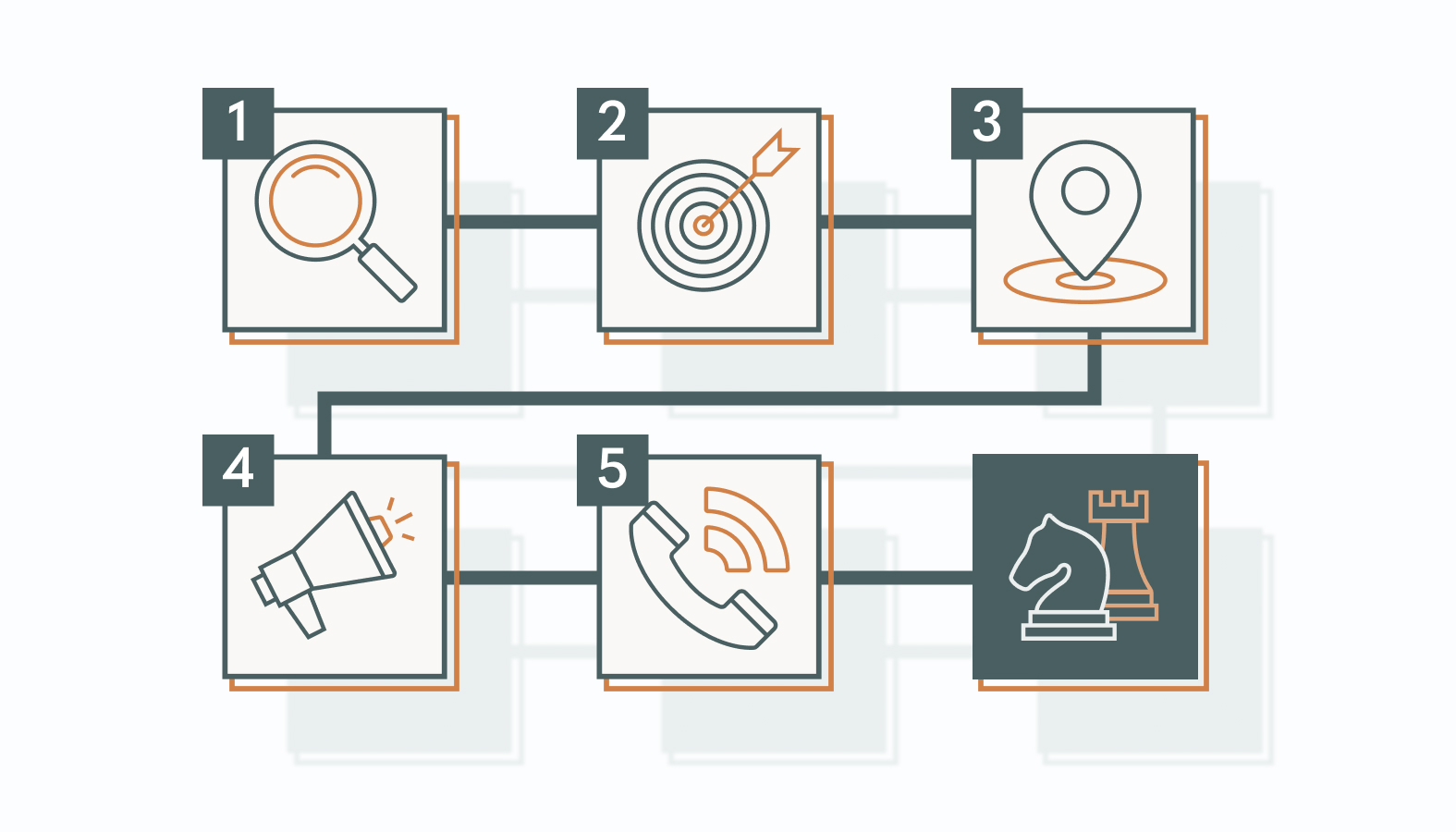Launching a startup is an exciting journey, full of possibilities and challenges.
One of the most critical steps in this journey is creating a solid go-to-market (GTM) strategy. It helps introduce your product or service and shows how to attract and retain customers in a competitive market.
This comprehensive guide will walk you through creating successful GTM tactics for startups. We’ll cover defining your target market, analyzing competitors, crafting a strong value proposition, and choosing the right pricing and distribution channels. Our goal is to equip you with the knowledge and tools needed for a confident market entry.
Whether you’re just starting out or refining your existing strategy, this guide will help you launch like a pro.
Understanding Go-to-Market Strategies for Startups
Having a well-defined GTM strategy can be the difference between success and failure for a start-up.
A GTM strategy details how a company will launch its product or service into the market, attract customers, and gain a competitive advantage. For startups, this strategy is crucial, as it offers a clear plan for navigating market challenges, maximizing resources, and meeting customer needs effectively.
Defining Your Target Market and Customer Persona
Before entering a market, startups need to know their customers. This means defining their target market and creating detailed customer personas.
Knowing your audience allows you to customize your messaging, product development, and marketing strategies to meet their needs and preferences.
Steps to Create an Ideal Customer Profile (ICP)
- Market Segmentation: Divide the market into distinct groups based on demographics, geography, psychographics, and behavior.
- Audience Research: Use surveys, interviews, and data analytics to gather insights about your potential customers’ needs, pain points, and preferences.
- Analyzing Current Customers: If you already have customers, analyze their characteristics to identify common traits and behaviors.
- Drafting Personas: Create detailed personas that include information like age, occupation, income level, interests, and challenges. These personas should represent your ideal customers.
- Validation: Validate your personas through further research and feedback to ensure they accurately represent your target audience.
Analyzing the Competitive Landscape
Understanding the competitive landscape is essential for positioning your startup uniquely in the market. It helps identify gaps and opportunities and provides insights into what competitors are doing well and where they might be falling short.
Tools for Competitive Research
- SWOT Analysis: Evaluate the strengths, weaknesses, opportunities, and threats related to your competitors.
- Market Research Reports: Use industry reports from Gartner or Forrester for comprehensive market insights.
- Social Listening Tools: Use tools like Hootsuite or Brandwatch to monitor competitors’ social media activity and public sentiment.
- Competitive Intelligence Platforms: Tools like Crayon or SimilarWeb provide detailed data on competitors’ online performance and strategies.
Understanding Your Competitive Edge
To stand out, startups need a unique value proposition (UVP) that clearly articulates their competitive edge. You need to identify what makes your product or service different and why it matters to customers.
Start by highlighting innovative features or capabilities that competitors don’t offer. Focus on how your product solves customer problems better than existing solutions.
Finally, develop a compelling brand narrative that resonates with your target audience and builds emotional connections. When you thoroughly understand your target market and competition, you can create a go-to-market techniques that leads to success.
Crafting Your Value Proposition and Brand Messaging
In the competitive startup world, your value proposition and brand messaging must resonate deeply with your audience.
A strong value proposition communicates the benefits your product or service offers, why it’s unique, and how it meets your customers’ needs.
Effective brand messaging, on the other hand, ensures consistency across all touchpoints and boosts your brand’s overall image.
Aligning Value Proposition With Customer Needs
To ensure your value proposition addresses customer pain points and desires, start by thoroughly understanding their challenges and goals. Conduct detailed market analysis to uncover their needs and preferences. Engage with target customers through surveys, interviews, and focus groups to gain insights.
Once you have a clear understanding, craft a value proposition highlighting how your product or service solves their pain points and fulfills their desires. Use simple, compelling language to make it easy for them to understand the unique benefits you offer.
Define Your Brand’s Unique Selling Points
Unique selling points (USPs) are the qualities that set your brand apart from the competition.
Identify the core strengths and unique features of your product or service. It could be an innovative technology, superior customer service, or an exceptional user experience.
Once identified, include these USPs in all your brand messages to communicate them across all platforms. Your USPs should be clear, concise, and compelling.
Building a Messaging Framework
A messaging framework ensures your brand’s communications are consistent and clear.
Define your brand’s key messages, including your value proposition, USPs, and core values. Develop a style guide that specifies the tone, voice, and language for all communications. This guide helps everyone create content that aligns with your brand.
Regularly update the framework to keep up with any changes in your market or customer insights.
Choosing the Right Pricing and Distribution Strategies
To create a well-planned go-to-market strategy for startups, selecting the right pricing and distribution models is paramount.
Your pricing model affects your revenue, customer acquisition, and overall business sustainability. Simultaneously, identifying the most effective distribution channels ensures your product or service reaches your target market.
Pricing Models for Startups
Here are the common pricing models:
Cost-Plus Pricing
Cost-plus pricing adds a markup to the production cost of your product or service. This method is straightforward and guarantees a profit margin.
However, it doesn’t consider market demand or the perceived value of the product. It might not be ideal for competitive markets where differentiation is essential.
Value-Based Pricing
Value-based pricing sets the price based on the perceived value to the customer rather than the cost of production. This model can lead to higher profit margins if your product offers unique benefits customers are willing to pay for.
The challenge is accurately assessing customer perception and ensuring the value justifies the price.
Freemium Pricing
Freemium pricing offers a basic version of the product for free while charging for premium features. This model can quickly build a large customer base.
However, converting free users to paying customers can be challenging, and the premium features must provide significant value to justify the cost.
Distribution Channel Selection
To effectively deliver your product to the market, below are some distribution channels:
Direct Sales
Direct sales involve selling your product directly to consumers without middlemen. This method gives you control over the customer experience and higher profit margins.
However, it requires significant investment in building and maintaining a sales team, which can be costly for startups.
Online Platforms
Using online platforms allows startups to reach a global audience with low overhead costs. This method offers scalability and access to a large customer base.
The competition can be fierce, and standing out requires strong marketing efforts and a solid online presence.
Partnering With Distributors
Partnering with distributors uses their established networks to reach a wider audience quickly. It can speed up market entry and ease logistics.
However, it usually means lower profit margins and less control over the customer experience.
Building a Marketing and Sales Plan
Creating a comprehensive marketing and sales plan is essential for startups to achieve sustainable growth and market penetration. The plan aligns your marketing efforts with your business goals, ensuring every initiative brings you closer to success.
Market Research and Analysis
Thorough market research and analysis are key to a strong marketing and sales plan.
Start by identifying your target market and understanding its size, growth potential, and trends. Use both primary research (surveys, interviews, and focus groups) to get firsthand customer insights and secondary research (industry reports, market studies, and competitor data) to gather information.
Combining these insights helps you make informed marketing decisions and find opportunities to stand out.
Define Business Objectives
Setting clear business objectives guides your marketing and sales efforts. These goals should be specific, measurable, achievable, relevant, and time-bound (SMART).
Align your objectives with the company’s mission and vision. For example, if your mission is to become a leader in eco-friendly packaging, you might aim for a certain market share in two years or increase customer acquisition by a specific percentage.
These clear objectives are benchmarks for measuring your progress and adjusting your strategies.
Brand Positioning and Messaging
A strong brand differentiates your company in the market and makes a lasting impression.
Define your brand’s core values, mission, and vision. Develop a unique value proposition that communicates the benefits of your product or service. Craft a brand story that resonates with your target audience and builds an emotional connection.
Consistent and compelling brand messaging across all channels keeps your brand top-of-mind for potential customers.
Marketing Strategy Development
Developing an effective marketing strategy involves selecting the right channels, creating engaging content, and using digital tools.
First, identify the best marketing channels for reaching your target audience, such as social media, email marketing, content marketing, and paid advertising. Create content that engages, educates, and entertains your audience, tailored to their needs and preferences.
Use digital tools such as marketing automation platforms, analytics tools, and customer relationship management (CRM) systems to streamline your efforts and measure your success.
Sales Strategy Development
A well-defined sales strategy is essential for converting leads into customers and driving revenue growth. Identify the most effective sales channels for your business, such as direct sales, online platforms, or partnerships with distributors.
Develop pricing strategies that reflect the value of your product and appeal to your target market. Use CRM systems to manage customer interactions, ensuring personalized communication and effective follow-up. Regularly review and refine your sales processes to improve efficiency and effectiveness.
Content Marketing and Lead Generation for Startups
Content marketing plays a crucial role in attracting and nurturing leads for startups. With valuable and relevant content, startups can build brand awareness, engage potential customers, and guide leads through the buyer’s journey to a purchase.
Attracting Leads
Creating content that captures the attention of your target audience and prompts them to engage with your startup is essential.
Raising Awareness
Raising awareness is the first step in attracting leads. Startups can execute content marketing, including blog posts, social media updates, videos, and press releases, to introduce their brand and highlight their unique value and industry insights.
SEO
Search engine optimization (SEO) improves the visibility of your content on search engines. With the use of relevant keywords, meta descriptions, and high-quality backlinks, startups can drive organic traffic and attract leads searching for related information.
Thought Leadership
Establishing thought leadership through content marketing involves creating insightful and industry-relevant content that positions your startup as an authority in its field. This includes publishing whitepapers, industry reports, and opinion pieces showcasing your expertise and innovative solutions.
Social Sharing
Social media amplifies your content reach. Startups can create shareable content like engaging posts, infographics, and interactive pieces to encourage social sharing and attract more leads.
Nurturing Leads
Once you have attracted leads, content marketing strategies should shift toward nurturing these prospects, building relationships, and guiding them through the buyer’s journey.
Educating Prospects
Content educates prospects about your startup’s offerings. Providing product guides, how-to articles, and explainer videos establishes your startup as a helpful resource and builds trust with potential customers.
Building Relationships
Fostering relationships with leads requires consistent and personalized communication. Send email newsletters, personalized content recommendations, and follow-up messages to keep leads engaged and informed about your latest updates and offerings.
Personalization
Personalization tailors your content to meet the needs and preferences of individual leads. It can be achieved through targeted email campaigns, personalized website experiences, and customized content suggestions based on user behavior.
Lead Scoring
Lead scoring prioritizes and identifies promising leads based on their engagement with your content. Criteria for lead scoring can include website visits, content downloads, and email interactions. It allows your sales team to focus on leads most likely to convert.
Lead Qualification
Lead qualification determines the readiness of leads to buy. Align marketing and sales teams to ensure smooth transitions from marketing-qualified to sales-qualified leads. Use content like case studies, product demos, and consultation offers to help qualify leads and move them closer to a buying decision.
Content Types for Each Stage of the Buyer’s Journey
Creating the right types of content for each stage of the buyer’s journey is critical for effectively nurturing leads and guiding them toward a purchase.
Here are the types of content suited for the top, middle, and bottom of the funnel.
Top of the Funnel (TOFU): Awareness Stage
At the awareness stage, the goal is to attract a broad audience and introduce them to your brand.
Blog Posts
Blog posts drive organic traffic and provide valuable information that addresses common problems or questions of your target audience.
Infographics
Infographics simplify complex information into a visual format, making them shareable and effective for raising awareness.
Social Media Content
Engaging social media posts helps increase your brand’s visibility and reach, allowing you to connect with a broader audience.
E-books
E-books offer in-depth information on relevant topics, establishing your brand as a thought leader and encouraging audience engagement through downloads.
Educational Video
Educational videos can explain concepts and demonstrate expertise in a concise, engaging format, making them ideal for capturing attention.
Podcasts
Podcasts allow you to share insights and stories in an accessible audio format, reaching audiences who prefer listening over reading.
Middle of the Funnel (MOFU): Consideration Stage
In the consideration stage, the focus shifts to providing more detailed information to help new customers evaluate their options.
Webinars
Webinars offer an interactive platform for in-depth discussions on specific topics so potential customers can engage directly with your brand.
White Papers/Reports
White papers and reports provide detailed research and insights, helping prospects understand the value and benefits of your solutions.
Case Studies
Case studies offer real-world examples of how your product or service has successfully addressed challenges, providing social proof.
FAQ Pages
FAQ pages address common questions and concerns, offering clear, concise answers that help prospects make informed decisions.
Bottom of the Funnel (BOFU): Decision Stage
At the decision stage, the content should focus on converting leads into customers by offering a final push toward purchase.
Free Trials/Demo
Offering free trials or demos allows prospects to experience your product first-hand, reducing the risk and encouraging commitment.
Customer Testimonials
Customer testimonials provide social proof and build trust by showcasing positive experiences from existing customers.
Product Sheet
Product sheets offer detailed specifications and benefits of your product, helping prospects understand exactly what they will receive.
Consultation Offers
Consultation offers provide personalized advice and solutions, demonstrating your commitment to addressing the prospect’s specific needs.
Real-World Examples of Successful Startup GTM Strategies
Examining successful go-to-market (GTM) strategies can provide invaluable insights and inspiration for startups looking to craft their paths to market dominance.
Let’s analyze the GTM plans of notable startups and the outcomes of their strategies.
Case Study 1: Uber
Uber transformed urban transportation with its convenient, app-based ride-hailing service.
Its GTM techniques focused on rapid user growth through aggressive market penetration tactics. These included promotions, discounts, local partnerships, and a data-driven approach to service areas.
Uber’s ability to adapt quickly to regulatory challenges and local markets was key to its success.
Case Study 2: Airbnb
Airbnb disrupted the hospitality industry by enabling people to rent out their homes or spare rooms to travelers.
Its GTM strategy focused on creating a strong community of hosts and guests, using word-of-mouth marketing, and leveraging user-generated content to build trust.
Airbnb also tailored its marketing efforts to different markets and emphasized building a trustworthy platform through safety measures and reviews, driving its growth.
Case Study 3: Caffco
Caffco, a coffee and beverage company, refreshed its brand to give it a modern and inviting feel and improve its market reach within the coffee community. It led to increased customer engagement and higher sales, showcasing the power of targeted marketing.
Its GTM strategy included using social media influencers, creating engaging content around coffee culture, and hosting events to build a loyal customer base.
Crafting Your Unique Go-to-Market Journey
Developing a successful go-to-market tactics for your startup requires creativity, data-driven decisions, and a customer-centric approach. You need to understand your target market, analyze competitors, craft compelling value propositions, and choose the right pricing and distribution strategies for sustainable growth.
If you’re feeling inspired and want to know more about how to tailor these strategies to your needs, we’re here to help.
Our experts at Agency are ready to have a no-pressure, genuine conversation about your startup’s challenges and opportunities. There’s no obligation—just an opportunity to gain insights and see how you can navigate your go-to-market journey more effectively.
Schedule a candid conversation with one of our experts. We’re excited to hear about your vision and discuss how we can support your success.











